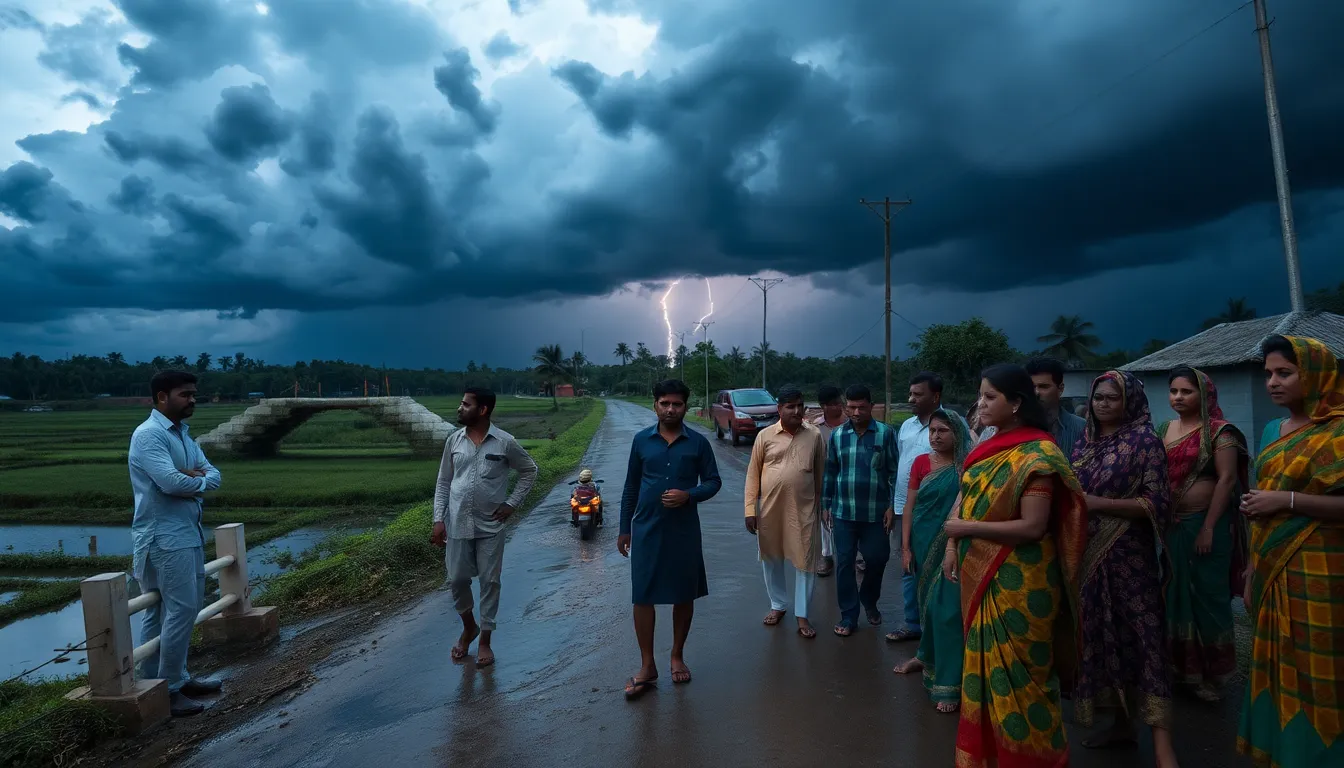In the last 24 hours, South Gujarat has experienced heavy rainfall, marking the official arrival of the monsoon season. According to reports from Gandhinagar, the Dang-Ahwa taluka in Dang district received the highest rainfall of 9.8 inches, while Kaprada in Valsad recorded 9.5 inches. Yellow alerts have been issued for areas including Narmada, Bharuch, Surat, Dang, Navsari, Valsad, Tapi, Daman, Dadra and Nagar Haveli, Amreli, Bhavnagar, Gir Somnath, and Diu, predicting heavy rainfall today.
As the monsoon officially began, Ahmedabad and Gandhinagar saw torrential rain accompanied by thunderstorms late last night. This downpour caused waterlogging in many areas, revealing the inadequacies of municipal drainage systems. In Vapi, the heavy rains led to a flood-like situation, while the Gira waterfall in Dang district has burst into full flow.
Other talukas in the state also reported significant rainfall. In the last day, more than 7 inches of rain fell in Vaghei and Subir talukas of Dang. Dharampur in Valsad and Vansda in Navsari recorded over 6 inches. Additionally, areas like Khergam in Navsari and Dolvan in Tapi experienced over 4 inches of rainfall. Manasa, Dehgam, and Gandhinagar talukas in Gandhinagar, Sutrapada in Gir Somnath, and Patan-Veraval also reported more than 3 inches of rain.
Overall, rainfall was recorded in 160 talukas across 27 districts of the state. 17 talukas received over 2 inches, while 37 talukas recorded more than 1 inch. However, 89 talukas saw less than 1 inch of rain. This rainfall is crucial for the farmers in the region, as it replenishes groundwater and helps in the upcoming agricultural season.
South Gujarat, which includes Bharuch, Narmada, Surat, Tapi, Navsari, Valsad, and Dang districts, has diverse land characteristics. The soil here is largely heavy and black, which is beneficial for agriculture. The region’s topography varies from coastal areas to hilly terrains, with the highest peak located in Saputara, Dang district.
The monsoon season plays a vital role in the agricultural calendar of Gujarat. Farmers rely heavily on the rains for their crops, and this year’s early monsoon is a positive sign. However, the heavy rainfall also brings challenges, such as the risk of flooding and damage to infrastructure. Local authorities are working to manage the situation and ensure safety for residents.
As the rains continue, the government is urging citizens to stay alert and take necessary precautions. Weather forecasts suggest the monsoon will remain active in the region for the next few days. Residents are advised to avoid low-lying areas and to stay updated with weather alerts from local authorities.
In conclusion, the heavy rainfall in South Gujarat is a double-edged sword. While it brings relief to farmers and replenishes water resources, it also poses risks of flooding and infrastructural challenges. The coming days will be crucial as the state navigates through the monsoon season.


Leave a Reply